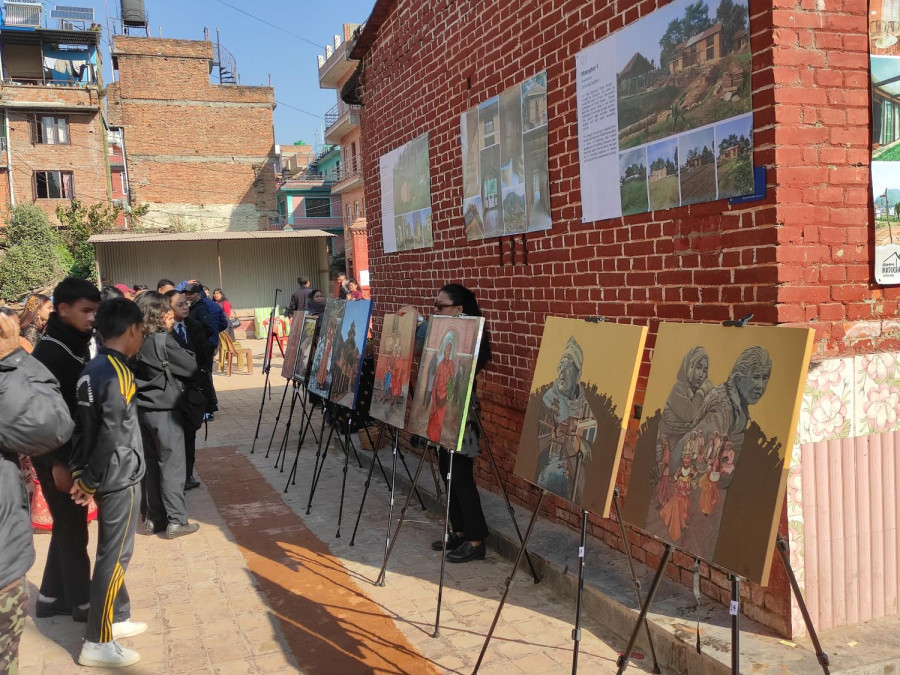Culture & Lifestyle
Scepticism looms over plans for arts and culture development
The many plans and programmes included in the new budget are commendable, however, their execution is still questionable, experts say.
Anish Ghimire
Like in previous years, the government has made some great promises when announcing the annual budget for the next fiscal year 2024/25. A handful of plans with a total budget of Rs11.91 billion have been announced for the Ministry of Culture, Tourism, and Civil Aviation to preserve and promote culture and the arts.
Various programmes are said to be conducted in cooperation with the community to preserve and promote the history, culture, language, and civilisation of places with old settlements, such as Kirtipur, Bandipur, Bungamati, Thimi, Gorkha, Janakpur, and Matihani.
Actor and director Prabin Khatiwada, reflecting on the government’s plan to develop and promote language, literature, philosophy, culture, art, music, and drama by introducing various programmes, says, “We’ve seen this before as well. Just by allocating a budget, a sector doesn't develop overnight. Various ‘programmes’ are said to be done, but what type of programmes are they? How will they be done remains to be seen”.
Similarly, the Chief of Lalit Kala Campus, Professor Ramesh Pokhrel, expresses scepticism about the feasibility of the proposed plans. He states, “While the plans are promising, the implementation mechanisms face significant challenges. At the local level, numerous legal and other restrictions hinder the smooth flow of work.”
Professor Pokhrel highlights the disparity between the ambitious goals outlined in the plans and the practical obstacles encountered during execution.
He further adds that while the government's financial plan each year includes many projects, monitoring and accountability of people responsible and involved in these projects always fall short.
“A strong mechanism to spend the allocated budget is lacking. Not just in this sector, but in every sector of this country,” he says.
However, both Khatiwada and Pokhrel applaud the many plans put forward by the government, like copyright protection and regulation and organising international-level conferences and meetings of Sanatan dharma and culture.
An encouraging sign of the government’s concern for arts and culture can be seen in its announcement to make efforts to include Janaki Temple in the World Heritage list. Special preservation efforts are also said to be made for Simraungadh Municipality in Bara.
Pradeep Kumar Rai, popularly known as Byakul Maila, believes that if all the authorities genuinely intend to develop this sector, a whole year is ample time to achieve successful implementation. He remarks, “The budget allocation for this sector is commendable in itself, but again, the same concern of whether or not the allocated money will ultimately be used for the betterment of our vital arts and culture remains to be seen.”
He points out that while the financial commitment is a positive step, the real challenge lies in ensuring that the funds are effectively utilised. Proper management, transparency, and accountability are crucial to prevent the misallocation or misuse of resources. Without these safeguards, the sector's potential growth and development could be compromised despite the generous budget.
There are fewer plans and projects this time to conserve arts and culture compared to the budget of the current fiscal year 2023/2024. The total budget allocation for the Ministry of Culture, Tourism, and Civil Aviation last year was Rs11.96 billion, whereas this year, it has decreased to Rs11.91 billion.
Even with the budget reduction, in an effort to mark Nepal's rich literature landscape, a Bhanu Literary Garden, featuring statues of eminent literary figures of Nepali language, will be established in Chundi Ramgha of Tanahun.
A historical museum is also said to be constructed in Gorkha to house records from the monarchy to the republic.
The government’s concern for the art and culture sector has always been disappointing. When allocating the budget for the Ministry of Culture, Tourism, and Civil Aviation, the cultural aspect is consistently overlooked and underfunded.
Bikash Ratna Dhakhwa, the General Secretary of the Nepal Art Council, says, “In the Ministry of Culture, Tourism, and Civil Aviation, culture is never a priority. The government is still yet to fully embrace this sector as a vital organ of the nation,” he says.
Dhakhwa emphasises the importance of balancing culture with tourism and civil aviation. He believes that culture is vital for preserving national identity, fostering social unity, and improving citizens' quality of life. Dhakhwa calls on the government to reassess its priorities and allocate enough resources to support and nurture arts and cultural heritage, as these are essential for the nation's growth and global reputation.
Artist Saurganga Darshandhari expresses concerns about the current budget allocation for the arts and culture sector, stating, “The budget is less. It is not enough. This sector should have been given more priority and more budget allocation.”
Despite this, Darshandhari remains optimistic due to recent government initiatives aimed at preserving and promoting arts and culture. She notes, “Even though more attention to this sector is needed, we are hopeful because of the recent plans introduced by the government to save arts and culture.”




 9.88°C Kathmandu
9.88°C Kathmandu















